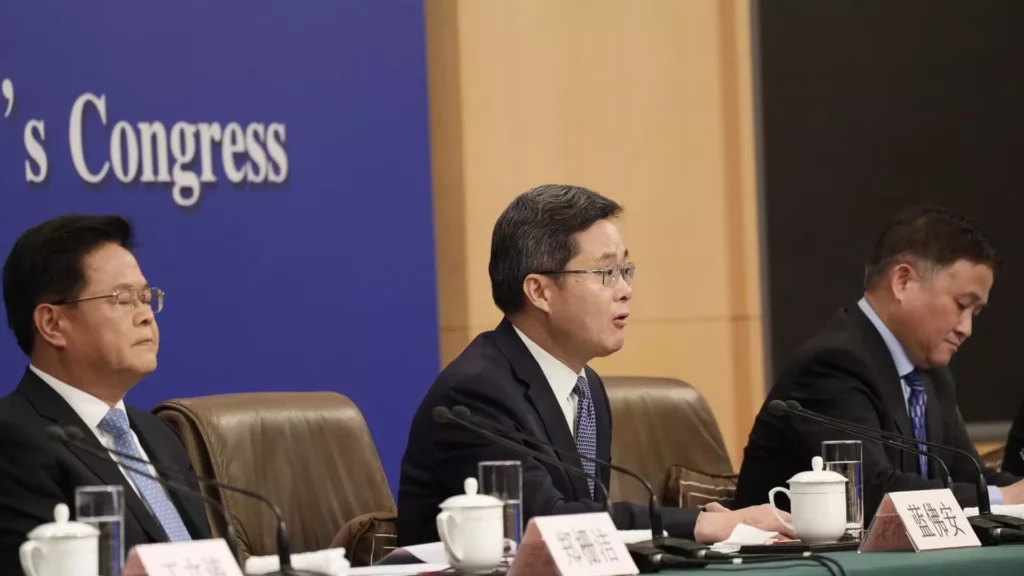In recent weeks, the economic landscape of China has painted a picture of unease, prompting heightened scrutiny of the government’s fiscal policies. With China’s Minister of Finance, Lan Fo’an, slated to conduct a press conference regarding potential measures aimed at invigorating the economy, financial analysts await with bated breath. The growing sentiment among economists is that China requires a robust fiscal reinforcement to navigate its current challenges. However, the government has yet to disclose any substantial fiscal measures, raising questions about its strategic preparedness.
The urgency for economic aid became starkly apparent during a late September meeting that saw the participation of President Xi Jinping and high-ranking officials. The consensus emphasized the necessity of bolstering monetary and fiscal policies, although specifics remained elusive. This absence of detail has led to disparate projections regarding fiscal stimulus requirements, with estimates oscillating between 2 trillion yuan (about $283 billion) and a substantial 10 trillion yuan. Such varying projections underscore the uncertainty permeating the economic recovery landscape.
Analysts like Ting Lu from Nomura have pointed out the procedural hurdles involved in implementing any proposed stimulus. Notably, the Chinese Parliament’s approval is essential for the activation of such funds, with an upcoming parliamentary session that could potentially pave the way for legislation. However, the critical aspect that remains overshadowed is the allocation of these funds—specifically whether they will be directed towards alleviating the fiscal strains of local governments or instigating an increase in consumer spending.
Current Economic Indicators
A closer examination of the economic indicators reveals a concerning trend. Recent reports indicated that China’s retail sales have experienced only tepid growth, failing to kindle any significant momentum in consumer activity. Compounding this concern is the persistent real estate slump, which continues to loom ominously over the market without exhibiting signs of recovery. The Gross Domestic Product (GDP) exhibited a modest increase of 5% in the first half of the year; however, this raises alarms regarding the likelihood of falling short of the annual target of about 5%.
As the nation anticipates the third-quarter GDP release scheduled for October 18, the stakes rise substantially. The aftermath of this indicator’s disclosure could either galvanize market confidence or further induce a cycle of pessimism among investors.
The response of the Chinese stock market following a week-long holiday showcased a disconcerting volatility. In juxtaposition to a previous upward rally, the major indices retraced their steps back to levels reminiscent of late September. The CSI 300 index had initially posted its most notable weekly gain since 2008, largely influenced by key policy announcements deemed crucial for reigniting economic growth. However, subsequent days revealed a stark decline as investor enthusiasm fell flat following the ingestion of anticipated stimulus measures.
This dynamic reinforces the delicate balance that policymakers must navigate. Just recently, the People’s Bank of China (PBOC) initiated interest rate cuts and extended support for the real estate sector, aligning its actions with global economic trends. The introduction of a $71 billion program aimed at facilitating stock market investments exemplifies this engagement. Additionally, the National Development and Reform Commission (NDRC) made a commitment to expedite the deployment of 200 billion yuan originally earmarked for next year’s investment projects. Despite these laudable movements, the NDRC refrained from unveiling an additional stimulus package.
As China gears up for the Minister of Finance’s anticipated announcement, the nation grapples with significant economic challenges. Stakeholders are eager for strategic clarity from the government to alleviate the anxieties that currently besiege the economic landscape. This clarity will be crucial not just in showcasing the government’s commitment to revitalizing growth but also in ensuring that any fiscal measures taken resonate with the pressing needs of consumers and businesses alike.
While the anticipation surrounding Lan Fo’an’s press conference reflects the urgency of China’s economic situation, the reality of effective implementation and strategic allocation of resources looms larger. As the nation strives to emerge from this economic impasse, a coherent, well-structured fiscal strategy could serve as a critical turning point in fostering sustainable growth and stability.

